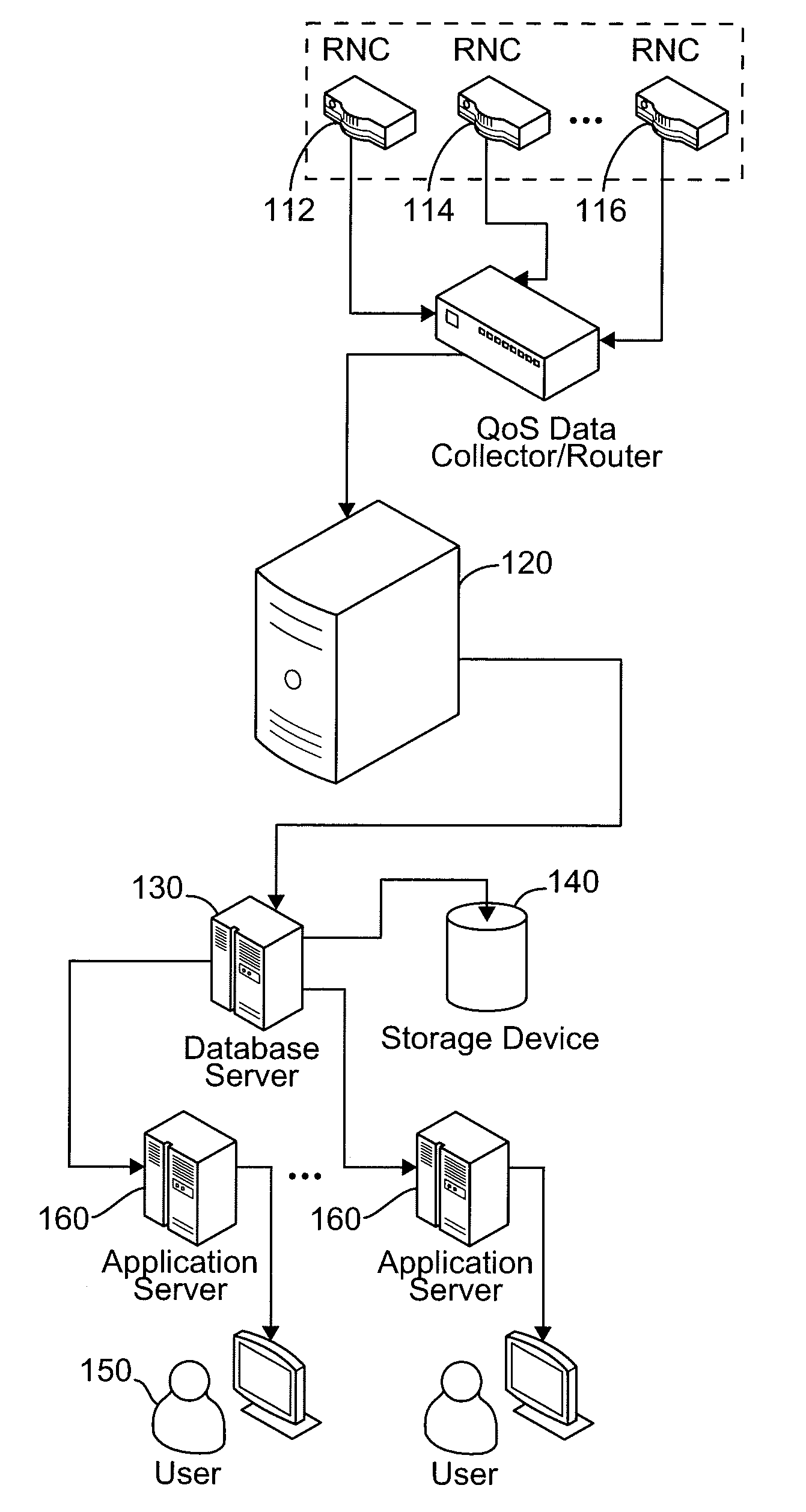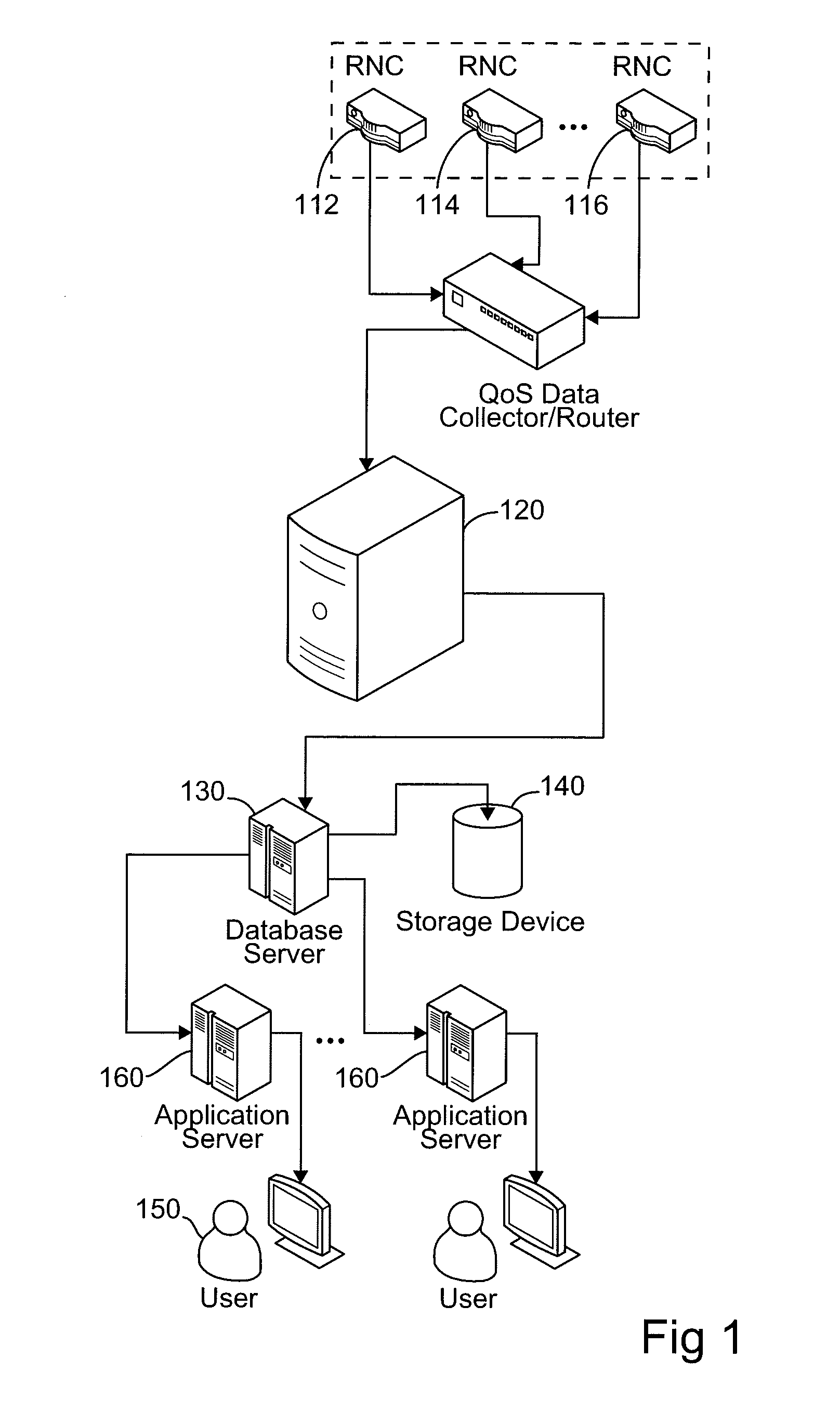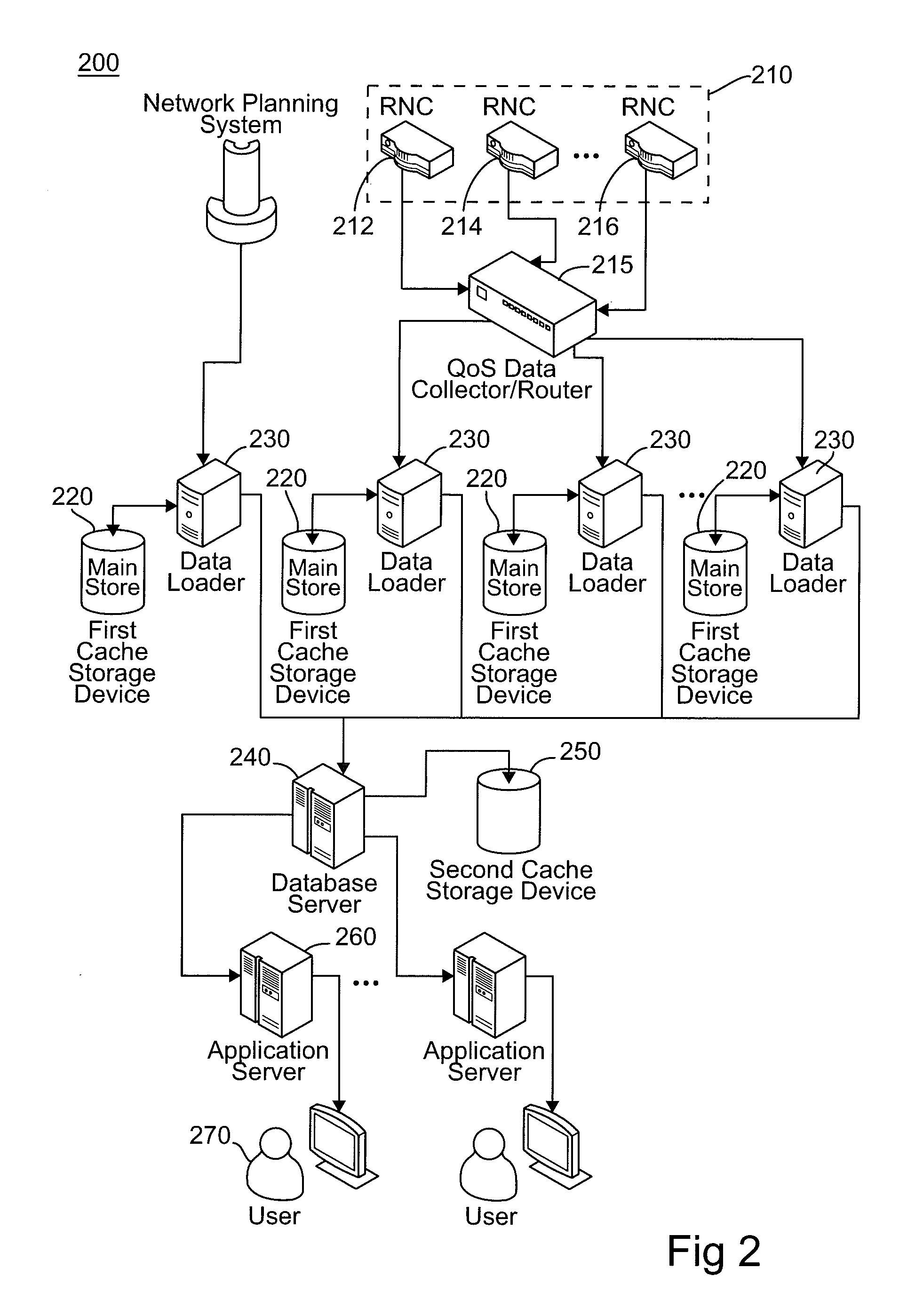Geolocation information storage system for mobile communications data
a geolocation information and communication data technology, applied in the field of geolocation information storage system for mobile communications data, can solve the problems of not allowing the network operator to narrow down the information, suffering from poor data rate, poor data rate, etc., to achieve precise data, reduce interference, and reduce the time of reporting process
- Summary
- Abstract
- Description
- Claims
- Application Information
AI Technical Summary
Benefits of technology
Problems solved by technology
Method used
Image
Examples
Embodiment Construction
[0031]The invention seeks to mitigate, alleviate or eliminate one or more of the disadvantages of the prior art, singly or in any combination. The invention uses two separate types of storage area for aspects of the user session data from a mobile radio communications network, as follows:
(i) A first type of storage area links directly to the processing units that extract information from the RNCs. This first type of storage area stores all of the data on each user session, extracted directly from the RNC. This data can be retained in the first storage area. By providing several, and possibly many, of these first storage areas, the access time to any individual one can be kept low. Thus the network management staff can access a particular record within one of the first storage areas within an acceptable time, on the rare occasions where direct access to an individual call record is needed.
(ii) The second type of storage area stores all of the relevant information on each user session...
PUM
 Login to View More
Login to View More Abstract
Description
Claims
Application Information
 Login to View More
Login to View More - R&D
- Intellectual Property
- Life Sciences
- Materials
- Tech Scout
- Unparalleled Data Quality
- Higher Quality Content
- 60% Fewer Hallucinations
Browse by: Latest US Patents, China's latest patents, Technical Efficacy Thesaurus, Application Domain, Technology Topic, Popular Technical Reports.
© 2025 PatSnap. All rights reserved.Legal|Privacy policy|Modern Slavery Act Transparency Statement|Sitemap|About US| Contact US: help@patsnap.com



